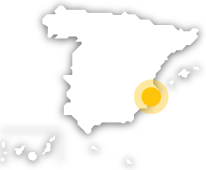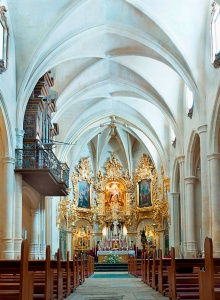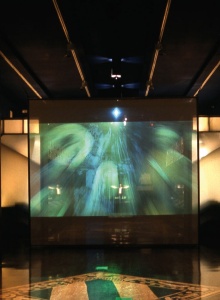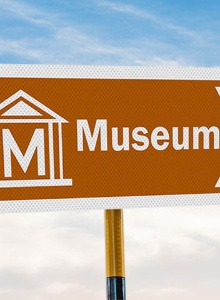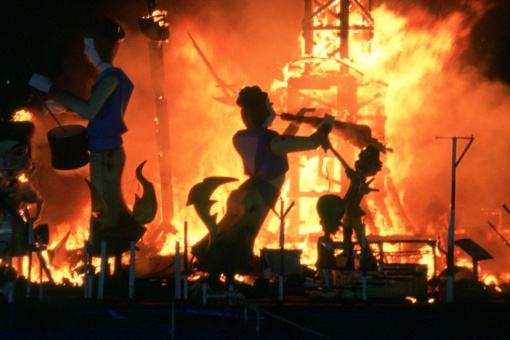The old quarter, located at the foot of this fortress, reveals an interesting civil and religious architectural legacy, without forgetting the emblematic Explanada de España, a favourite place for recreation for its inhabitants.Alicante is also a land of deep-rooted popular traditions such as the Festival of Moors and Christians and the Night of San Juan. The star of the local cuisine is rice, cooked many different ways.
Alicante's strategic location, right on the Levantine coast, has meant that the main Mediterranean civilizations have settled here over the centuries. Phoenicians, Greeks, Romans, and later Arabs, came to these shores in search of new trade routes and contributed with their culture to shape the character of the city.The city and its port are watched over by Mount Benacantil, a large rocky headland at the top of which stands Santa Bárbara fortress. Of Arab origin, the castle exhibits traces of all the civilizations that passed through the city, although much of the current construction belongs to the 16th century. From the top of its walls there are views of the entire city, as well as panoramic views of the coastal strip and inland for several kilometres around.The old walled city was built at the foot of this fortress. One of the buildings that most stands out among its network of narrow streets is the gothic church of Santa María ( 16th century), built on an old Arab mosque. Opposite this you can find the Casa de la Asegurada museum ( 17th century), which houses an important collection of contemporary works by artists of the stature of Joan Miró, Pablo Picasso and Eduardo Chillida.The Town Hall square, presided over by the Baroque façade of the Town Hall, is another of the important spaces in the old quarter. Behind it are two important buildings, the Jesuit school and the Procathedral of San Nicolás, completed in 1662. Herrerian and Baroque styles are mixed in this place of worship, inside which there is a beautiful 15th-century cloister.The coastline is the favourite place for recreation among locals. The Explanada de España, facing the port, is a lively boulevard with lots of outdoor seating areas. A more modern recreational area stretches along the breakwater in the harbour, where there are also numerous restaurants and bars. Next to both areas is the town's beach, El Postiguet, the perfect spot to enjoy the sea and the sun.The recently renovated Provincial Archaeological Museum (MARQ) is well worth a visit. Located in the building of the old San Juan de Dios Hospital, this educational and entertaining Museum exhibits the remains of the Tossal de Manises site, which reveals interesting information about the ancient city in Iberian, Greek and Roman times.
Fiestas, local cuisine and surrounding areas
Alicante is also a land of deep-rooted traditions such as the Festival of Moors and Christians, one of the most popular in the Levante region. The other big festivity is the Night of San Juan, on 24 June. It is a celebration featuring bonfires on which ninots (papier-mâché effigies) are burned, which in the days before had been paraded through the streets of Alicante capital city.Alicante is a bustling hub of activity all year round due to its status as a tourist centre, just a few kilometres from San Juan beach and towns including Santa Pola, Torrevieja,Altea and Denia. All of them have a wide range of accommodation on offer. It is worth noting the Parador de Jávea, located in this beautiful coastal city in the north of the Costa Blanca.Along the Alicante coast there are also a dozen golf courses with magnificent views of the Mediterranean.Alicante has a number of natural treasures that are worth visiting. Halfway between Alcoi and Ibi, in the Sierra del Menejedor, is the Carrascal de la Font Roja Nature Reserve. Other nature reserves that play a vital role in protecting the environment are El Fondo, Lagunas de la Mata y Torrevieja, Montgó, Penyal d’Ifac, Salinas de Santa Pola and Marjal de Pego-Oliva. In the interior of the province you can visit the city of Elche and its palm grove, declared a World Heritage Site.Of course you must not leave without trying one of the many different mouth-watering local rice dishes: arroz a banda (rice with fish), arroz negro (rice with cuttlefish), baked rice...and the list goes on. There are some fish and shellfish dishes worth trying too. For dessert, look no further than the pan de higo (dried fig paste), turrón (nougat made with toasted almonds, honey and sugar) and Jijona ice cream. These meals can be washed down with wines with Alicante Designation of Origin, among which Fondillón stands out, a highly appreciated vintage sweet dessert wine.

